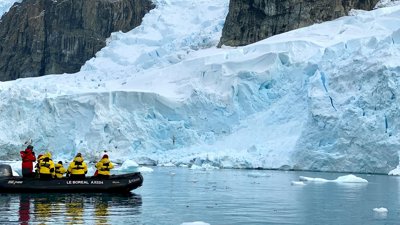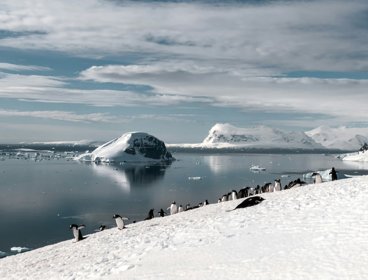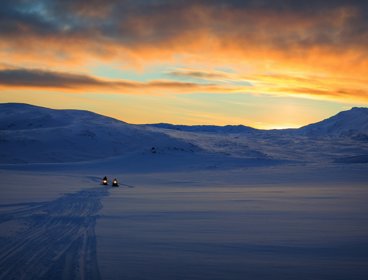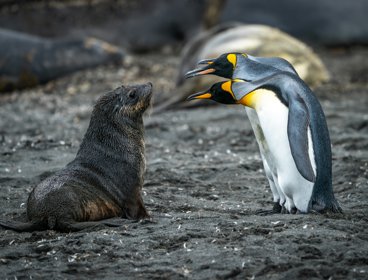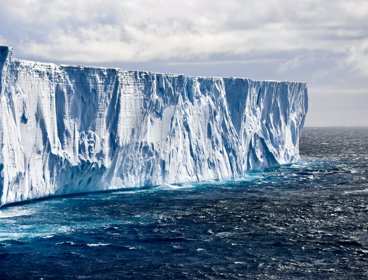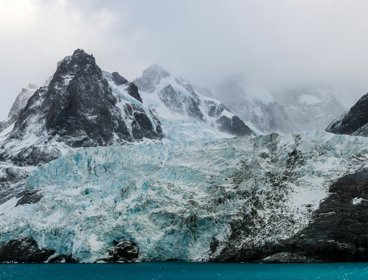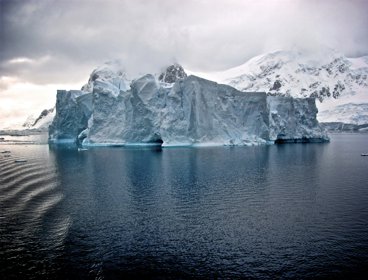Henry Burgess is the Deputy Head of the Polar Regions Department at the Foreign and Commonwealth Office.
He is responsible for the administration of the British Antarctic Territory, including ensuring its long term security and protection and has a role in advising the UK government on all things Antarctica. He represents the UK in international discussions about the Antarctic environment. We talked to him about the Antarctic Treaty.
What exactly is the Antarctic Treaty?
The Treaty, which dates from 1959, governs all activities in Antarctica. It puts in place a unique and globally important system of international governance and establishes the continent as a region exclusively for peace and science. It also prohibits military activity and sets aside all territorial claims.
Subsequent agreements reached under the Treaty system have widened its remit to cover conservation of marine living resources, including highly regulated fishing in Antarctica and nearby areas of the Southern Ocean; implemented practical measures to protect the environment; and prohibited the commercial extraction of the potential mineral wealth of this vast, but vulnerable continent.
Why was it originally needed and what were the most concerning threats at the time it was signed?
Only seven countries have ever formally claimed parts of Antarctica: the United Kingdom, Argentina, Australia, Chile, France, New Zealand and Norway. During the 1940s and 1950s the competing claims between the UK, Chile and Argentina in the Antarctic Peninsula caused international tension. There was also Cold War disagreement between the then USSR and the United States about their potential claims and future use of Antarctica. Possible military and diplomatic conflict was seen as the most pressing threat.
However, the International Geophysical Year (IGY) in 1957-58 demonstrated successfully that countries with an interest in Antarctica could work together on scientific research. This collaboration eased tensions and provided a rationale for countries to look for a way to better manage what was increasingly seen as a precious scientific asset. This led directly to the creation of the Treaty, signed in 1959 in Washington DC.
Why do you think it has been so successful?
There are probably four main reasons why many people think Treaty has been so successful and why countries continue to join: there are now fifty one Parties, representing over eighty percent of the world. Firstly, it is short: the central Treaty document has only fourteen separate Articles, but it has proved itself to be relatively adaptable in terms of keeping pace with developing environmental concerns. Secondly, it is easily understandable. The prohibitions on commercial mining, nuclear testing, military forces and the focus on sharing scientific research are clear. Also, the annual decision-making body is a consensus organisation so in effect every one of the twenty nine Consultative (voting) members has a veto over any changes they do not support. Finally it sets aside territorial issues so the seven original claimants’ territorial aims are neither denied nor resolved – essentially Parties have agreed to disagree.
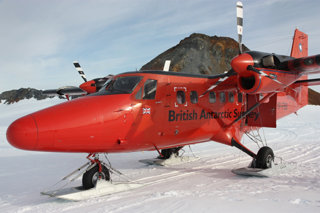
 As time goes on, how might the threats to Antarctica change?
As time goes on, how might the threats to Antarctica change?
The threats to Antarctica as perceived in 1959 were clear. Armed conflict, nuclear testing and radioactive waste disposal, diplomatic wrangling over land and assets and a general concern that countries could not be trusted to do the right thing were all big issues. In the 1990s the threats became more environmental. The possibility of commercial mining, unfettered building and other construction and the absence of any specially protected areas became priorities. Some people believe that those concerns have now, to some extent, been addressed through the Treaty and related agreements.
However as we learn more about Antarctica we know that the twin-track threats of human activity – particularly the cumulative impact in certain locations and any big increases in visitor numbers – and the rapidly accelerating effects climate change, especially in the Peninsula and in the West Antarctic Ice Sheet, may emerge as significant threats.
Research, by its very nature, can sometimes be intrusive on an environment. What compromises on environmental protection have had to be made in order to continue geographical research in Antarctica?
The Environmental Protocol (part of the Treaty System) commits the Treaty nations to ‘comprehensive protection of the Antarctic environment’ through a variety of means. One of the most important of these is that all activities, including research, require an Environmental Impact Assessment before they go ahead. This essentially means that each country needs to balance whether the expected positive results of the activity will outweigh the damage that might be caused to the natural environment.
In theory, the more significant the damage – such as the building of a runway, the establishment of a new research facility or research involving large numbers of animals – the greater the benefit to the wider scientific community will have to be. But it remains a concern of some Parties that these assessments may not always be as rigorous or as joined-up internationally as they could be. In the end there is no mechanism within the Treaty System of blocking such proposals.
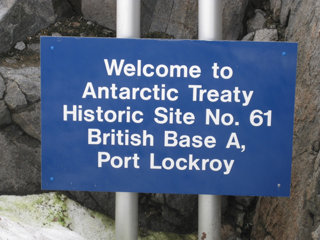
Can the management structure of the Antarctic Treaty be successfully mirrored in other large scale treaties (such as those on climate change)?
At the heart of the Treaty is the fact that the seven original claimants have agreed to set aside their territorial claims and not enforce their claims against others. All Parties have promised not to make new claims. For all intents and purposes Antarctica is a shared space.
Whilst it is possible to think of other global spaces as sharing elements of this sense of shared space it is hard to imagine countries setting aside their territorial claims where there are existing industries, populations and strategic interests. Part of the initial attraction of the Treaty in Antarctica was that there was relatively little that countries had to sacrifice and a great deal to be gained in avoiding future conflict.
But it may be that the focus within the Treaty on the central role of the region as one for peaceful activity and science is something that could be mirrored in other areas.
The Treaty covers everything that happens south of the 60°S latitude line. Given that Antarctica is influenced by physical processes that could happen anywhere, is there an argument for making the Treaty more global in its scope?
It is true that the Antarctic is affected by – and in turn affects – global issues, not least in terms of climate. Research stations in the Antarctic Peninsula have recorded an increase in the average annual temperature of 3°C in the last sixty years; one of the fastest incidents of warming anywhere in the world. This already seems to be having an effect on the local environment – particularly glacier size, snowfall and penguin breeding patterns.
The Antarctic Treaty System already looks beyond the 60°S latitude line though; the fisheries use and conservation regime covers the sub-Antarctic islands and extends in places up to 45°S: roughly equivalent to the south of New Zealand. But it is hard to see any extension of the Treaty’s provisions into the global setting being agreed, for all the reasons why many people think the current Treaty has been successful.
Why is there not a matching treaty that covers the Arctic Circle?
The main reason why there is no Arctic Treaty is because, unlike Antarctica, the Arctic is an ocean surrounded by land. This means that there is already an extensive legal framework that applies to it. Firstly, all the land in the Arctic falls within the territory of one of the eight Arctic States (Canada, the Kingdom of Denmark, Finland, Iceland, Norway, Russia, Sweden and the United States). Their national laws apply to this Arctic land.
Secondly, the Arctic Ocean, as with all seas of the world, is covered by internationally agreed laws of the sea, such as the United Nations Convention on the Law of the Sea (UNCLOS). Although there is occasionally talk about the value of such an Arctic Treaty, the countries of the Arctic, and many others around the world, therefore see no need to create an additional legal framework enshrined in a Treaty.
Henry was interviewed in March 2015
Key Words
Diplomacy
The process of negotiating between different countries.
Environmental Impact Assessment
A survey that tries to predict the positive and negative environmental consequences of a project going ahead.
Territory
An area of land that falls under the control of another state or country.
Treaty
An agreement between countries and bound by international law.
Lesson Ideas
Thinking about key events in geographical history (such as climate change and the invention of nuclear weapons) students can draw a time line which represents the different considerations that an agreement such as the Antarctic Treaty would have to recognise.
Ask students to imagine what Ernest Shackleton would have made of the way the Antarctic is used for research and diplomacy today. This can lead into a discussion of the relationship between exploration and research and how they can together be both a source of conflict and concord.
Students can research which set of countries have an Antarctic Territory and research stations on the continent. They will notice it is a rather select group. Ask students to consider why it might be that these countries in particular have a territory while others do not.
Links
British Antarctic Territory, Foreign and Commonwealth Office
